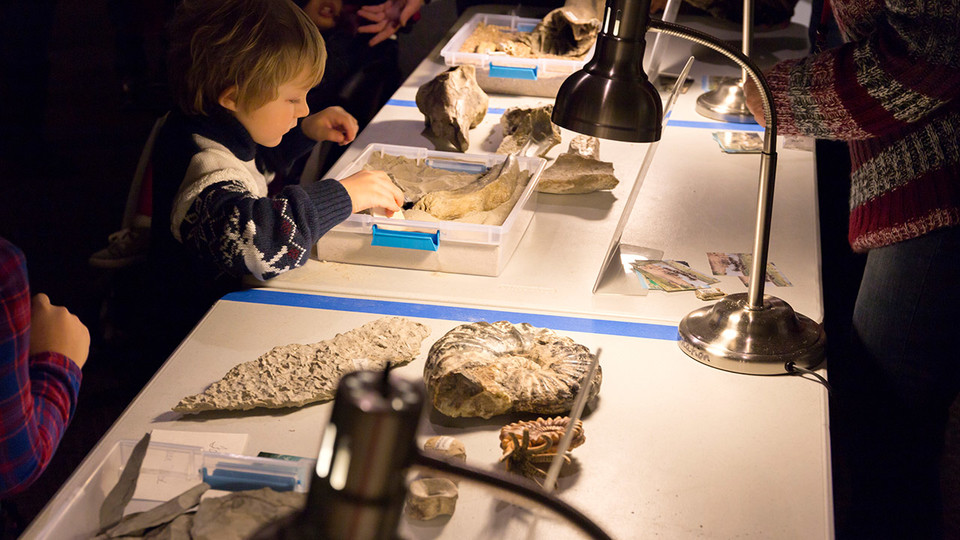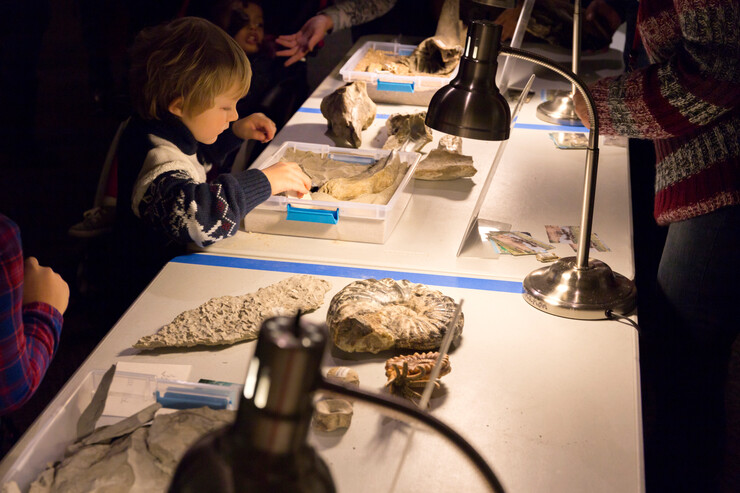· 2 min read
Morrill Hall to host Dinosaurs and Disasters Feb. 2

The University of Nebraska State Museum and the University of Nebraska–Lincoln Department of Earth and Atmospheric Sciences will host the 15th annual Dinosaurs and Disasters family fun day from 9:30 a.m. to 4:30 p.m. Feb. 2 at Morrill Hall, south of 14th and Vine streets.
Scientists and students at Nebraska will provide hands-on activities and demonstrations to help visitors explore science and society. Visitors can learn about the science of tornado forecasting and what to do in the event of an earthquake. They also can learn about nature’s food webs and how policies impact those webs, and map the oceans to understand oceanic environments.
“We often forget how much science is part of our daily routine — weather forecasts, smartphone apps, and drones monitoring for drought,” said Susan Weller, the museum’s director. “This year, event activities are centered on how science focused on disasters — preventing them or recovering from them — informs our lives.”
Mueller Planetarium will present the fulldome show “Weather: Wonders and Mysteries Revealed.” Viewers can experience weather phenomena, from extreme events such as tornadoes and hurricanes to beautiful optical effects such as rainbows and the aurora borealis. Show times are 10 and 11 a.m., noon, and 1, 2 and 3 p.m. The show is 30 minutes. Due to overhead motion and occasional loud sounds, children under 4 will not be admitted.
“Dinosaurs and Disasters was dreamed up by students who wanted to engage the public on issues in the geosciences that shape lives, impact pocketbooks and stimulate imaginations,” said Tracy Frank, professor and chair of Earth and atmospheric sciences. “On this 15th anniversary, it’s great to look back on what this long-term cooperation between the department and the museum has achieved. Thousands of Nebraskans have learned about the geosciences, students have had opportunities to hone skills in civic dialogue about science, and students and faculty have discovered ways to make their research more relevant to society.”
Regular museum and planetarium admission will be charged. Parking is free in front of the museum.








